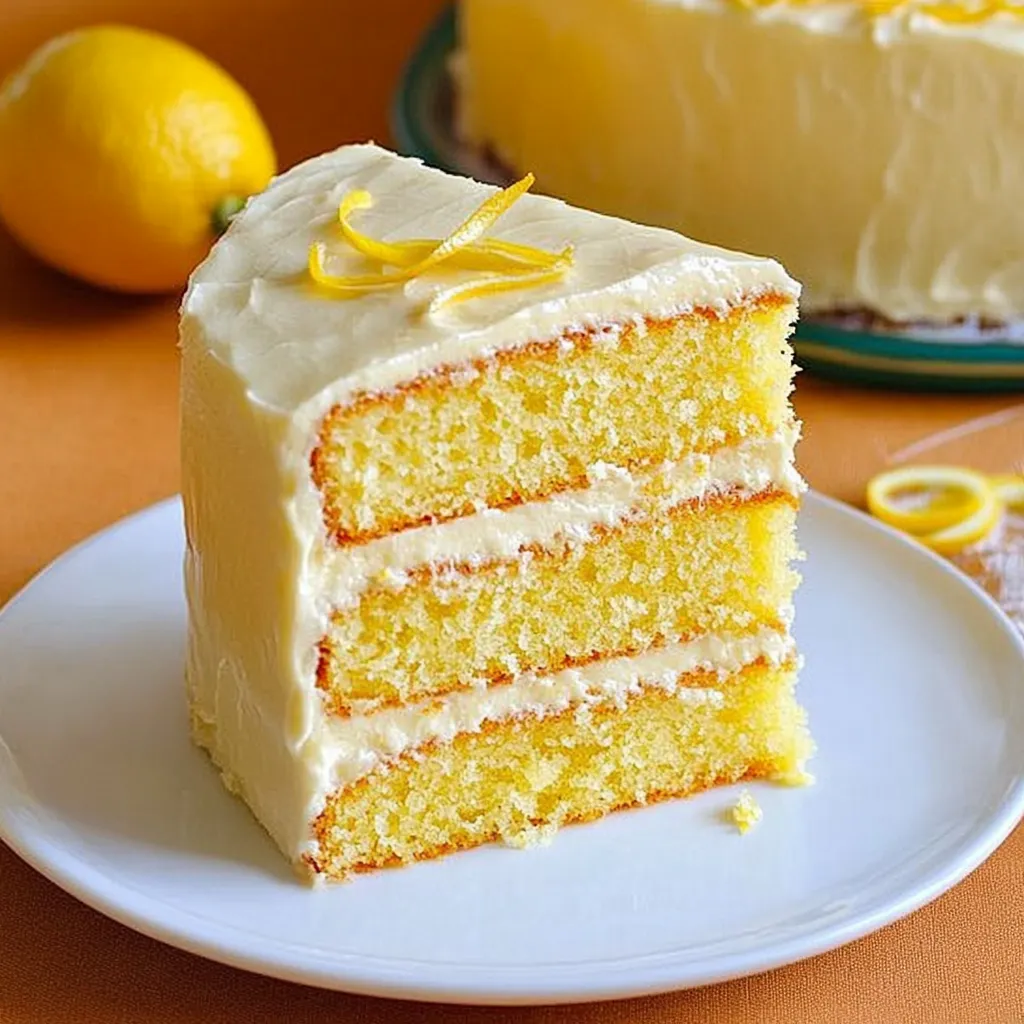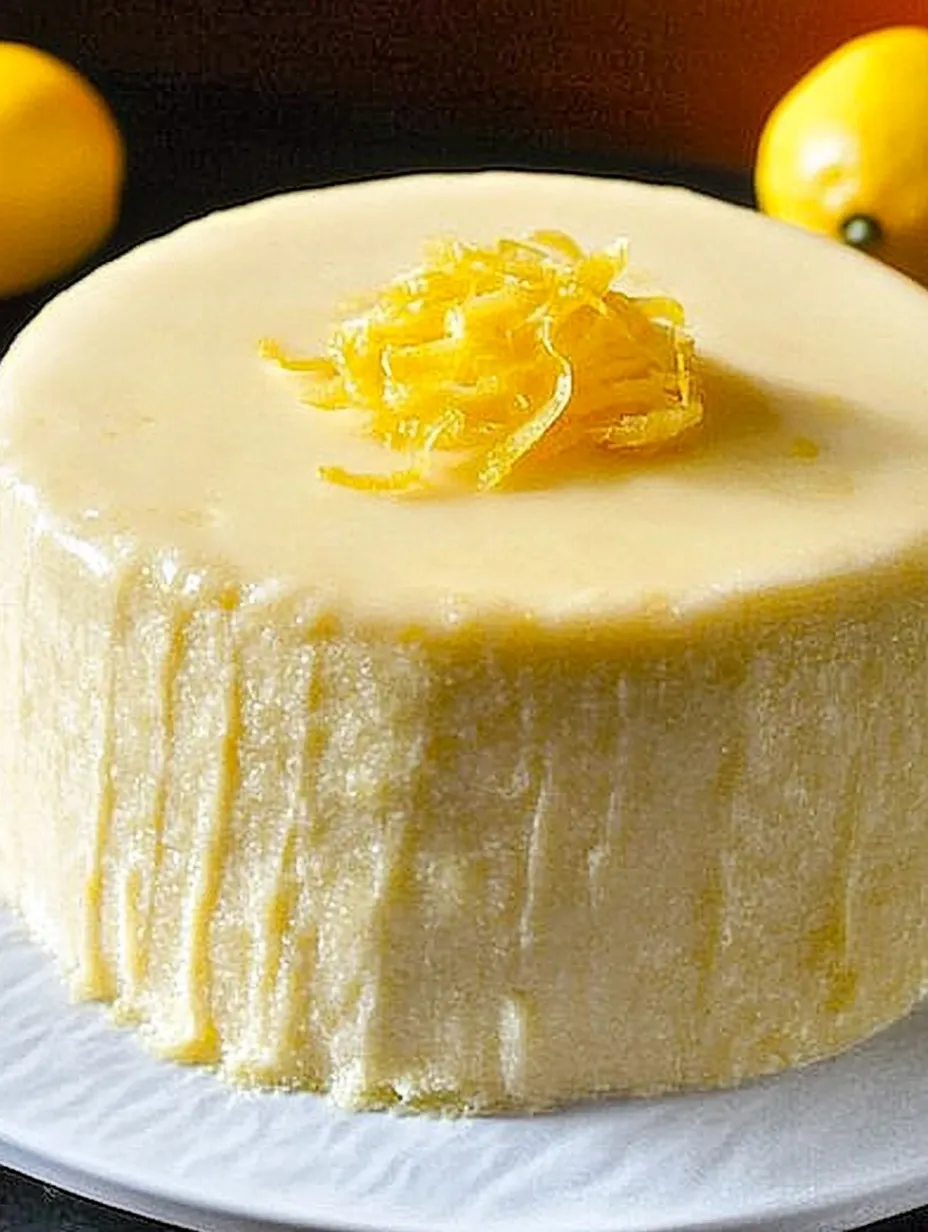 Pin it
Pin it
This lemon velvet cake brings sunshine and brightness to any celebration table. The tender crumb comes from a perfect balance of flours while fresh lemon zest infuses every bite with citrus aroma. Topped with a velvety lemon buttercream, this cake delivers the perfect combination of tangy and sweet flavors that will delight lemon lovers.
I first developed this recipe by modifying my beloved red velvet cake formula. After watching my lemon-obsessed daughter light up at her birthday when I served this instead of traditional cake, it became our special celebration tradition.
Ingredients
- All-purpose flour: Strengthens the cake structure while still maintaining tenderness
- Cake flour: Creates that velvet soft texture this cake is famous for
- Baking soda and baking powder: Work together for the perfect rise
- Salt: Enhances all flavors especially the lemon notes
- Sugar: Balances the tangy lemon and creates moisture
- Vegetable oil: Ensures the cake stays moist for days
- Vegetable shortening: At room temperature creates the perfect creamy base
- Vanilla extract: Adds depth and rounds out the citrus flavor
- Pure lemon extract: Intensifies the lemon flavor throughout
- Large eggs: Provide structure and richness
- Buttermilk: Reacts with leavening agents for tenderness and slight tang
- Fresh lemon zest: Provides bright authentic lemon flavor in every bite
For the Frosting
- Powdered sugar: Provides the sweet base for the frosting
- Unsalted butter: Creates rich creamy texture
- Pure lemon extract: Intensifies the lemon flavor
- Fresh lemon zest: Adds visual appeal and flavor bursts
- Milk: Adjusts consistency for perfect spreading texture
Step-by-Step Instructions
- Prepare the Pans:
- Thoroughly grease two 9 inch round cake pans with butter or shortening. Dust with flour ensuring all surfaces are coated. Cut parchment paper into two circles to perfectly fit the pan bottoms. This triple preparation ensures your cakes will release flawlessly.
- Combine Dry Ingredients:
- Sift both flours together with baking soda, baking powder, salt and sugar. Sifting is crucial here as it incorporates air and ensures no lumps remain. This creates the foundation for the delicate crumb structure.
- Create the Base:
- In your electric mixer bowl combine vegetable oil, shortening, vanilla and lemon extract. Beat at high speed with the whisk attachment until the mixture becomes surprisingly light and fluffy. This process incorporates air which is essential for the cake's texture.
- Incorporate Eggs:
- Add eggs one at a time, fully incorporating each before adding the next. This gradual addition prevents the batter from separating and ensures each egg is properly emulsified into the fat mixture.
- Add Lemon Zest:
- Gently fold freshly grated lemon zest into the mixture. The oils from the zest will begin releasing immediately, infusing the batter with vibrant citrus aroma. The folding motion preserves the air you've incorporated.
- Combine Wet and Dry:
- Add dry ingredients in three separate additions, alternating with buttermilk in two additions. Always begin and end with dry ingredients. This method prevents overmixing and keeps the batter light. Mix just until no flour pockets remain.
- Bake to Perfection:
- Pour batter into prepared pans and bake at 325°F for 30 to 35 minutes. The lower temperature allows for even baking without excessive browning. Test with a wooden toothpick which should come out clean or with a few moist crumbs.
- Cool Completely:
- Allow cakes to rest in pans for exactly 10 minutes. This timing allows the structure to set while still warm enough to release. Turn out onto wire racks to cool completely before frosting.
- Prepare Frosting:
- Combine powdered sugar, optional lemon zest and butter until the mixture becomes crumbly. This initial dry mixing coats the sugar particles with fat for smoother texture. Add lemon extract and milk gradually, beating until light and fluffy.
- Assemble and Decorate:
- Place one cake layer on serving plate. Add frosting to the top and spread evenly. Position second layer and apply remaining frosting to the top, creating decorative swirls if desired. Garnish with candied lemon zest for an elegant presentation.
 Pin it
Pin it
The lemon zest is truly the star ingredient in this recipe. I learned through multiple test batches that finely chopping the zest after grating distributes the lemon flavor more evenly throughout the batter, preventing concentrated pockets of intense lemon flavor.
Storage Tips
This cake maintains its moisture beautifully when stored properly. For short term storage, keep in an airtight container at room temperature for up to 4 days. The cake actually tastes even better on day two as the flavors meld together overnight. For longer storage, wrap individual slices tightly in plastic wrap followed by aluminum foil and freeze for up to 3 months. Thaw slices at room temperature for about an hour before serving.
 Pin it
Pin it
Perfecting Your Lemon Zest
The secret to maximizing lemon flavor without bitterness lies in proper zesting technique. Use only the colored outer portion of the lemon peel, avoiding the white pith beneath which adds unwanted bitterness. A microplane grater works best, but a standard grater or vegetable peeler followed by fine chopping works too. For the most aromatic zest, roll lemons firmly on the counter before zesting to release the essential oils.
Buttermilk Substitutions
If you find yourself without buttermilk, you can easily make a substitute that works perfectly in this recipe. Add 1 and 1/2 tablespoons of white vinegar or lemon juice to a measuring cup, then fill to the 1 and 1/2 cup line with regular milk. Let it stand for 5 minutes until slightly thickened and curdled. This homemade version provides the same acidity needed to react with the leavening agents for proper rise.
Make It Ahead
This cake is perfect for preparing in advance of special events. Bake the cake layers up to two days ahead and store tightly wrapped at room temperature. The frosting can be made a day ahead and refrigerated, but bring it completely to room temperature and rewhip before using. Alternatively, fully assemble the cake a day before serving for even better flavor as the lemon notes develop overnight.
Frequently Asked Questions
- → How do I avoid overmixing the cake batter?
Overmixing can make the cake dense. Mix just until the flour is incorporated and the batter is smooth, avoiding prolonged mixing.
- → Can I replace buttermilk with another ingredient?
If you don't have buttermilk, you can use a mix of regular milk and lemon juice or vinegar. Let the mixture sit for 5 minutes before using.
- → What’s the best way to zest lemons for this cake?
Use a fine grater or microplane to remove only the bright yellow citrus layer. Avoid grating into the white pith, as it can be bitter.
- → Can I make the frosting ahead of time?
Yes, you can prepare the frosting a day in advance. Store it in an airtight container in the refrigerator and let it come to room temperature before spreading.
- → How do I make the candied lemon zest garnish?
Boil lemon zest strips in sugar water for 15 minutes, then cool them on a rack before tossing them in fine sugar for a sparkling touch.
- → Can I bake this as cupcakes instead of a cake?
Yes! Divide the batter into lined cupcake tins, filling each about 2/3 full, and bake for 18-20 minutes at the same temperature.
- → What’s the ideal way to store the cake?
Store the cake in an airtight container in the refrigerator for up to 3 days. Bring to room temperature before serving for the best texture and flavor.
